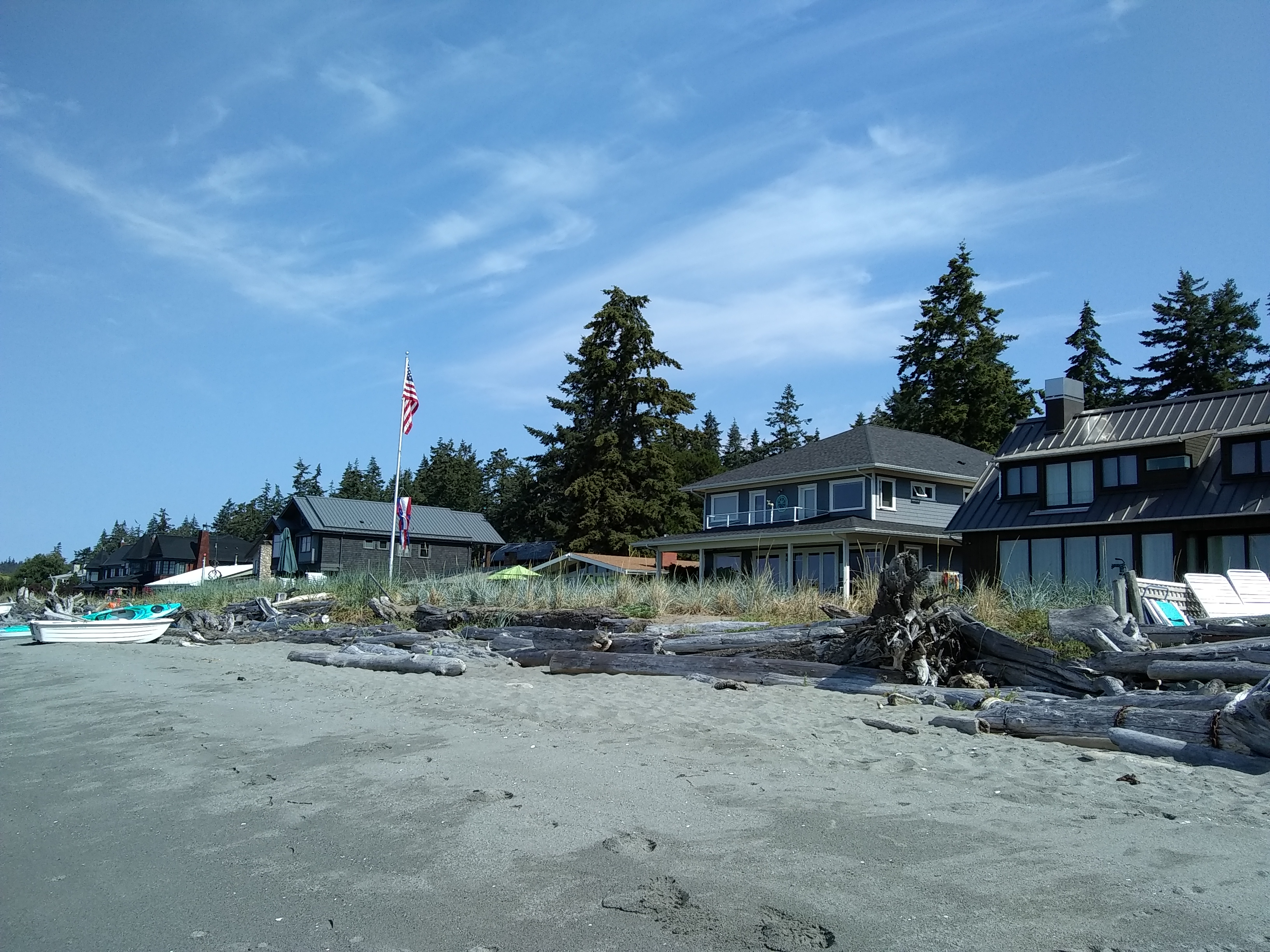Coastal Erosion Project Resources:

Beach-building (accretion) and erosion are natural processes. The desire to live and build structures on our coastlines exposes our homes, roads, commercial and industrial facilities, shipping ports, marinas and other buildings to shoreline erosion.
Why do we care about the erosion along our coasts?
Our coastlines are currently home to more than 40% of the U.S. population. There is a long trend of higher growth on the coasts. Coastal counties have grown an average of 5.6% since 2010, while inland counties grew just 4%.
As global sea level rises, wave action and storm surge increase the likelihood for extensive coastal erosion. It is estimated that coastal erosion currently costs roughly $500 million per year for U.S. coastal property loss, including damage to structures and loss of land. As our climate continues to change, the increasing frequency of extreme weather threatens our shoreline communities.

Our coastlines are currently home to 40% of the U.S. population. There is a long trend of higher growth on the coasts.


Where it is feasible, returning our coastal estuaries and shoreline to a natural, undeveloped state can increase the resilience to storms, flooding, erosion, and other threats to these communities. Coastal wetlands are well known to be “natural sponges” that absorb floodwaters, putting the brakes on destructive wave action, and mitigating coastal erosion. Natural shorelines buffer storm surges, sequester carbon and other pollutants and support a healthy habitat for commercially and recreationally important fish species.
Living shorelines, soft shore protection, Green Shores for Homes and other hybrid approaches are nature-based solutions to coastal erosion that can mimic nature while protecting your property and increase critical habitat for marine species. Coastal restoration projects may replace a seawall or bulkhead with a natural beach, soft shore protection, salt marsh bordered by an oyster reef, or similar structure. One study found that living shorelines removed more than 50% of nitrogen from the water, and more was removed as sites matured.
Living shorelines are natural solutions to coastal erosion.

© 2020 Shore Friendly. All Rights Reserved.
Protecting coastal communities has become increasingly important as the population grows and sea levels rise. However, shoreline hardening has harmful impacts on wildlife and fish habitat. One study found that seawalls supported 23% lower biodiversity and 45% fewer organisms than natural shorelines.
Soft shore protection or living shorelines are a natural approach to reduce erosion and flooding, while also creating or maintaining habitat. Living shorelines projects may replace a seawall or bulkhead with a natural beach, soft shore protection, salt marsh bordered by an oyster reef, or similar structure.
One study suggested that marshes protect shorelines from erosion better than bulkheads. It found that Hurricane Irene damaged 76% of bulkheads surveyed, while it did not damage marshes with or without sills.
Nutrient pollution is a widespread, costly, and challenging problem.
If you live on the shoreline, you will find a softer shoreline to be more beautiful and resilient than a bulkhead. Living shorelines are often more effective if they stretch along an entire beach, rather than just one property. Consider connecting with your neighbors to build living shorelines.
If you do not live on the shoreline, consider volunteering to help with projects to restore coastal areas, such as planting marsh grasses and removing invasive plants.
A marsh sill is a type of low-profile stone structure used to contain sand fill to create a new planted marsh to help dissipate wave energy so that the marsh can establish and help reduce erosion farther inland.

North Carolina Environmental Quality
We can all take actions to help reduce shoreline erosion.

Kids helping plant seagrass as part of a coastal restoration project.

Natural protection with driftwood.

Soft shoreline with barrier.
We need your help to improve the Toolkit by completing our easy, 3-minute survey. Your insight is valuable to us.